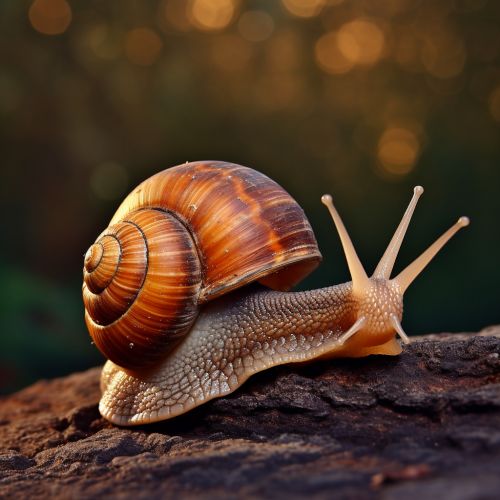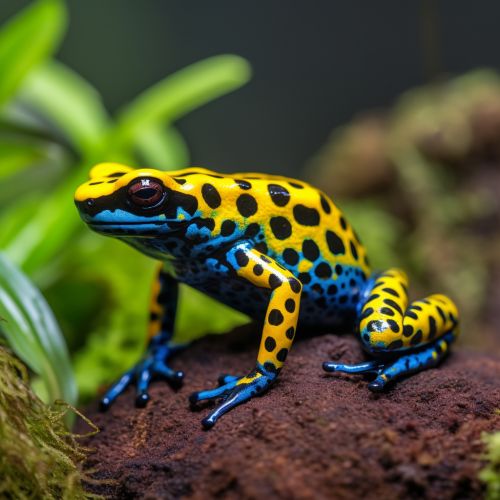The Biological Mechanisms of Animal Defense
Introduction
The biological mechanisms of animal defense encompass a broad range of strategies and adaptations that animals use to protect themselves from predation and other threats. These mechanisms can be broadly classified into physical defenses, chemical defenses, behavioral defenses, and camouflage. This article will delve into the intricacies of these defense mechanisms, exploring the evolutionary pressures that have shaped them and the roles they play in the survival of various animal species.
Physical Defenses
Physical defenses in animals are often the most visible forms of defense and can include features such as hard shells, spines, horns, and teeth. These defenses are primarily used to deter predators by making the animal difficult to eat or injure.
Hard Shells and Exoskeletons
Many animals, particularly invertebrates like molluscs and arthropods, have evolved hard shells or exoskeletons as a form of physical defense


. These structures are typically made of chitin or calcium carbonate, which provide a hard, protective barrier against predators. The shell or exoskeleton not only protects the animal's soft body parts, but can also deter predators by making the animal difficult to consume.
Spines and Quills


. Spines and quills are another common form of physical defense in animals. These sharp, often barbed structures can inflict painful wounds on predators, deterring them from attacking. Animals such as porcupines, hedgehogs, and sea urchins are well-known for their use of spines or quills in defense.
Horns and Antlers
Horns and antlers, found in animals such as deer, antelope, and rhinoceroses, can also serve as physical defenses. These structures are typically used in combat with other members of the same species, but can also be used to deter or fight off predators.
Chemical Defenses
Chemical defenses involve the production and use of harmful or distasteful substances to deter predators. These substances can be produced by the animal itself, or acquired from the animal's diet.
Toxins
Many animals, such as certain species of frogs, snakes, and insects, produce toxins as a form of defense. These toxins can be delivered through bites, stings, or skin secretions, and can cause a range of effects in predators, from discomfort and illness to paralysis and death


.
Distasteful Substances
Some animals produce distasteful substances that make them unpalatable to predators. For example, many species of insects and amphibians secrete bitter or foul-tasting substances from their skin when threatened.
Behavioral Defenses
Behavioral defenses involve actions taken by an animal to avoid predation. These can include escape behaviors, threat displays, and alarm calls.
Escape Behaviors
Escape behaviors are perhaps the most common form of behavioral defense. These can include running, jumping, flying, burrowing, or swimming away from a threat. Some animals have evolved specialized adaptations for escape, such as the ability to quickly change direction or the ability to startle predators with sudden movements or sounds.
Threat Displays
Threat displays are behaviors designed to intimidate or deter potential predators. These can include making the animal appear larger, displaying bright colors or patterns, making loud noises, or exhibiting aggressive postures or movements.
Alarm Calls
Alarm calls are vocalizations made by an animal to warn other members of its group about the presence of a predator. These calls can serve to alert others to the threat, as well as confuse or deter the predator.
Camouflage
Camouflage is a form of defense that involves an animal blending in with its environment to avoid detection by predators. This can be achieved through coloration, patterning, and body shape, as well as behaviors such as remaining still or hiding.
Cryptic Coloration
Cryptic coloration involves an animal having colors and patterns that match its environment, making it difficult to see. This is a common form of camouflage in many animals, from insects and reptiles to birds and mammals.
Mimicry
Mimicry involves an animal resembling another animal or object in its environment. This can serve to deter predators if the animal being mimicked is dangerous or unpalatable. For example, many harmless species of snakes, butterflies, and beetles mimic the appearance of more dangerous or distasteful species to avoid predation.
Conclusion
The biological mechanisms of animal defense are diverse and complex, shaped by millions of years of evolutionary pressure. These defenses play a crucial role in the survival of animal species, allowing them to avoid predation and other threats. Understanding these mechanisms not only provides insight into the behavior and ecology of animals, but also has potential applications in fields such as medicine, agriculture, and biomimicry.
